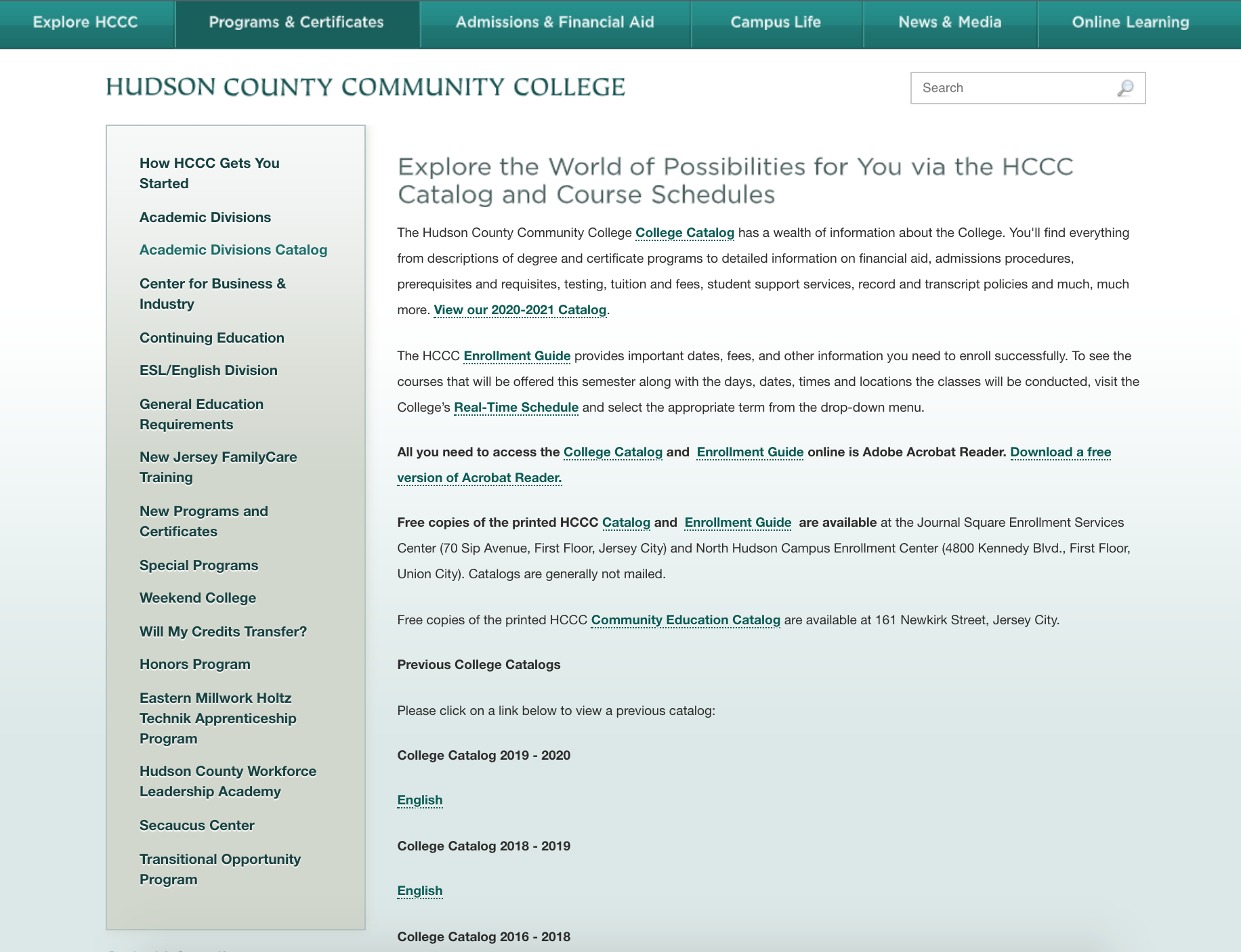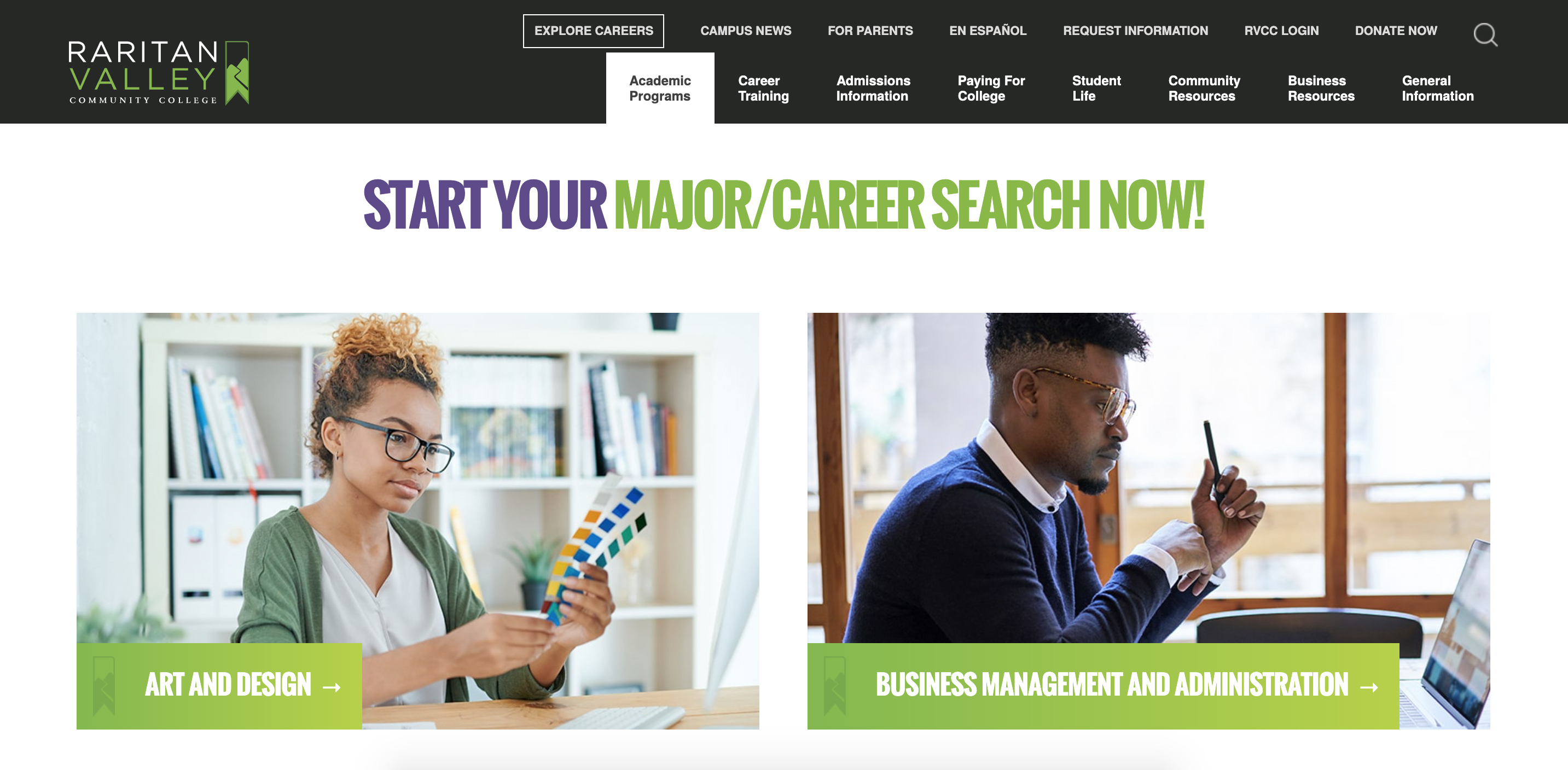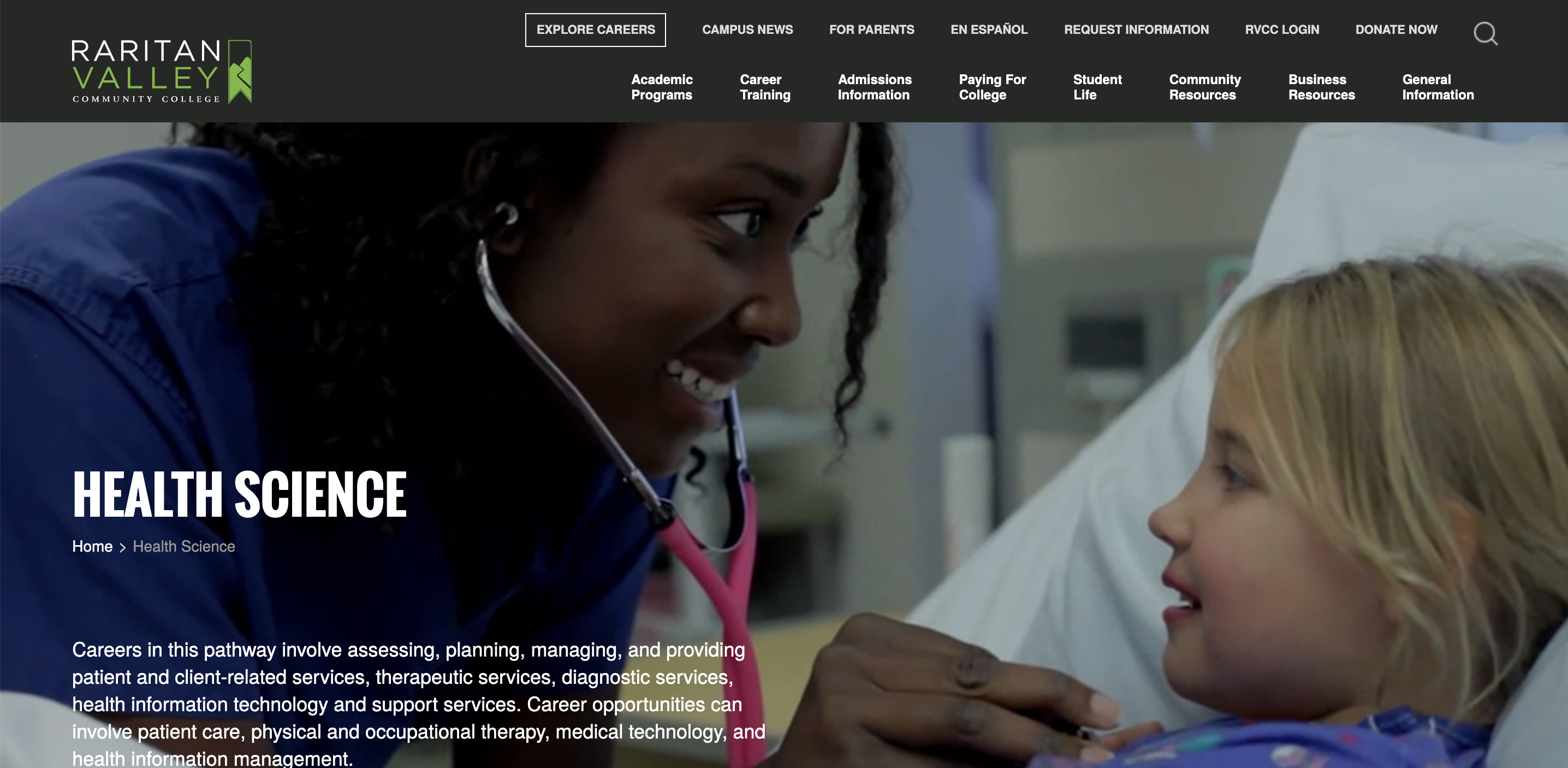Has your educational institution adopted the Guided Pathways initiative? If your admissions team is evaluating this national reform, we have some recommendations and experience to share.
Implementing guided pathways is not only an effective organizational framework for your school, it’s also a great marketing opportunity. Guided pathways can give your community college the opportunity to focus on student engagement and enrolment. By redesigning academic programs and the journeys in which students can segment them, your school can keep students on their path and improve graduation rates. Students and see more easily the successful careers they can pursue.
This article will explain everything you need to know about promoting your school's guided pathways. We’ll walk you through the steps to follow for planning, implementing, and marketing your guided pathways program.
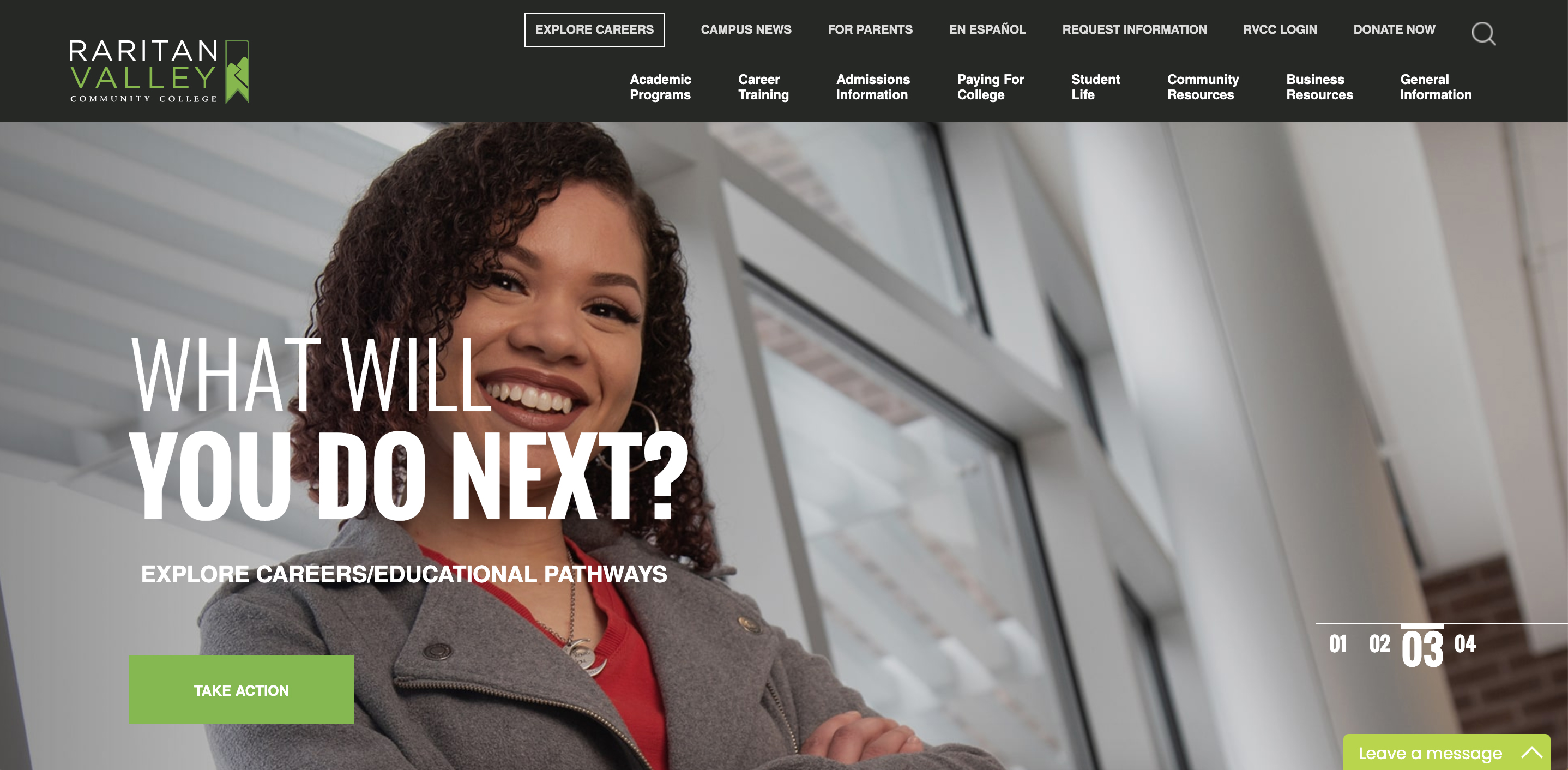
WHAT ARE GUIDED PATHWAYS?
Structured academic pathways are now recommended on a national level by major organizations such as the American Association of Community Colleges’ (AACC). This reform is being implemented by community colleges and educational institutions across the US.
The goal of guided pathways is to help students make better enrolment decisions, advance on a career path, and earn community college credits to transfer to a four-year institution and degree. This student-centered approach is designed to structure courses in a coherent way and support students in exploring career options. Guided pathways increase the chances of completing a degree by mapping clear milestones and progression, and by providing information about employment for each academic program.
Thanks to these guided maps, students know in advance what they need to do to prepare for a career in a given field. This motivates them to complete their coursework and diminishes the stress of not knowing whether they’re on the right track for a degree or transfer.
CHALLENGES
Many community colleges offer an array of courses on their website without a clear path about the overall academic program for a given career or degree. Too many course options lead to indecision and doubt. Students can end up having a difficult time navigating the abundance of choice and end up making poor decisions about the programs they enter.
Research shows that 40% of students drop out of their community college because the process of planning their courses towards a certificate or a career can be confusing. The mistake many community colleges make is to leave students to their own devices to pick a course of study and piece together their schedules based on incoherent class lists and program information. This creates huge barriers to student enrollment and graduation.
A community college needs a clear user experience (UX) not only in its degree and course framework but also on its website. If the requirements for earning a degree are unclear, if your program requirements are confusing, if your curriculum lacks coherence and progress milestones, your students are likely to drop off or apply to a different school altogether.
THE BENEFITS OF GUIDED PATHWAYS
Students have a better chance to complete a degree if they have a clear roadmap of the courses and credentials they need. By incorporating guided pathways, your college will better engage students and improve college completion. Under the pathways model, colleges redesign their academic experience to help students explore careers, choose a program of study, and develop an educational plan early on.
The guided pathways model does not call for a full institutional redesign. The goal is to present courses in the context of highly structured programs that align with a students’ potential career path. The pathways approach can still provide students with opportunities to explore careers, but they can better navigate their education by following an academic plan based on program roadmaps.
This approach not only simplifies the student decision-making process, it also allows colleges to provide predictable course schedules, frequent feedback, and student support. Students are further motivated by being able to track their accomplishments and see how much further they have to go to complete their degree.
WEBSITE CONTENT
Once a guided pathway initiative at your institution has begun, implementing it online can start simply with a micro-site or a series of landing pages and unique creative content added to your existing website. It’s not an overly complex project to invest in, and the returns can be significant. The design should include engaging information, inspirational visuals, videos, and effective copywriting.
Here are some questions your college admissions and marketing teams should consider:
1. Is your community college organizing its degrees and certificates into clusters or meta majors?
2. Does your website content allow students to easily map their academic journey to achieving their future aspirations?
3. Would a student browsing your website be able to effortlessly pick a program and create a plan of study that will carry him/her through to graduation?
4. Could a student easily plan a major course sequence that will allow him/her to transfer to a four-year college without taking excess credits?
5. Would a prospective student clearly recognize which courses are critical in each program and what the key progress milestones are?
6. Do you have available marketing materials and information campaigns to inform prospective students and faculty staff about careers they can pursue?
Most community college websites highlight a course catalog with a list of the degrees and certificates. There may be many courses listed and the choices can be overwhelming. Often, the course catalog is not interactive or searchable. Colleges may simply upload a PDF file with all their academic programs. This makes it even more difficult for new students to read and review their options.
The below website example shows the many course catalog versions listed by this community college. The course catalog is uploaded as a PDF file on this site and is not interactive or searchable.
In addition to providing a course catalog, your school should create a website where available degrees and courses are categorized by career types. The information should be organized so students can see and navigate the entire list of recommended options for that path, with the different suggestions they can take each semester to earn their certificate or degree.
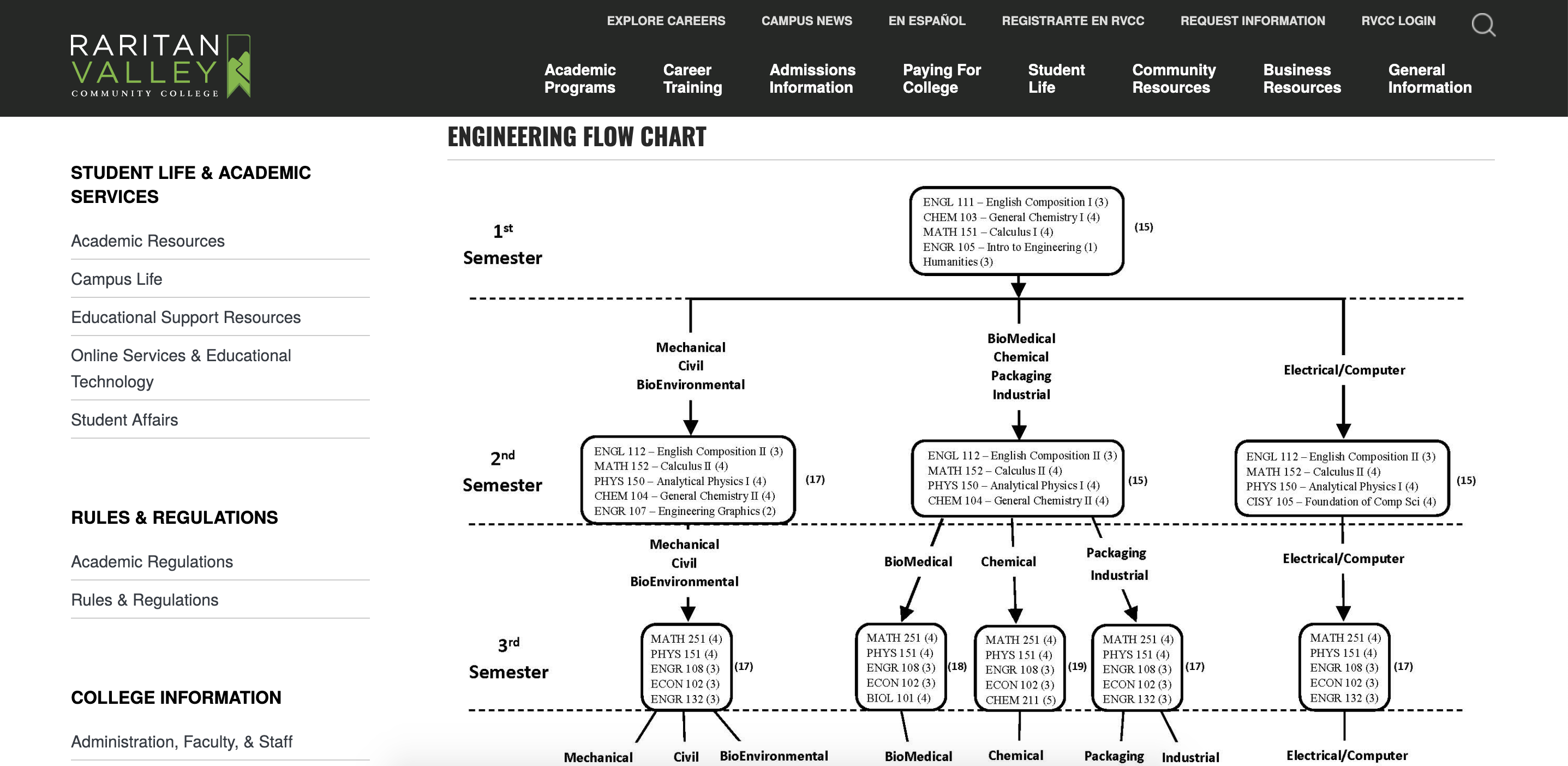
In the above website example, from a New Jersey community college, the first-time student may experience the curriculum poorly as it could be unclear what it all means. Long lists illicit choice-paralysis, and ultimately a user that leaves the website. What should they know about this career choice? What kind of jobs can they expect after being educated on all these courses? What's the point of the calculus and the microeconomics classes listed on the program?
This is where the guided pathways approach comes into play.
To help RVCC reorganize their site, we simply adopted the reorganization by the school constituents into visually engaging and simple to understand career paths. There is no need to mention or name these pages as guided pathways, as this is an internal phrase for the school. A prospective student should only assess the careers, and the majors and programs related to them. Our team worked with RVCC to design different landing pages like Art and Design, Communication and Media, Health Sciences, Technical Careers, etc. For example, a student interested in science and technology can easily see the type of jobs available to them on this path.
We created a detailed page for each pathway with an overview of the employment choices and professional certifications available. This simple approach offers a glimpse of the future career a student can advance towards by choosing to follow it.
The content we created for the school speaks the language of its students, engages prospective candidates, and excites them to begin learning. RVCC’s website also clearly lists degrees designed to help a student transfer to a four-year college should that career require a Bachelor’s Degree.
We developed RVCC’s website to make it simple for students to plan their future. We accomplished that in part with inspirational videos about learning accounting or building drones. Not to mention it’s way more exciting for prospective students to consume information this way rather than read through a course catalog. We added authentic student testimonials and success stories, as well as simple calls to action (phone, email, live chat, connect with admissions, find out more information).
Addressing pathway grouping and the layout of information can be a bit of an organizational challenge. There are internal adjustments a college will have to work on structurally - at a program level and at a curriculum level - providing the right classes and courses. There's also a need for adjustments from a marketing perspective. Your community college has to commit to explaining its guided pathways to students and academic advisors and to present these as career options versus thinking about majors and degrees solely.
Let’s take another example from our work with Passaic County Community College. The college has recently started talking about guided pathways and needed engaging content that could be used at upcoming virtual events. Our team is currently helping create 10 short 45-second videos that showcase the many careers available to prospective students around their guided pathways program.
TAKEAWAYS
Designing your college website in a smart way can help grab student attention and promote deeper consideration and enrollment. Categorizing your academic divisions by career aspirations and goals can be a very effective and simple marketing strategy to implement on your website, in videos, and in campaigns.
Implementing a guided pathways approach does not need to be a monumental website update or project. A community college can implement guided pathways by simply rethinking how they promote their school and provide copy that speaks with a student, not to them. This could be an exciting opportunity to include more engaging content and revise your overall messaging approach.
Our team is bullish on guided pathways, especially when executed properly. We can support your institution and implement engaging websites, landing pages, or campaigns.
To connect with us, just say hello@edesigninteractive.com. Our website design team in Morristown, New Jersey would be happy to learn more about your needs.
